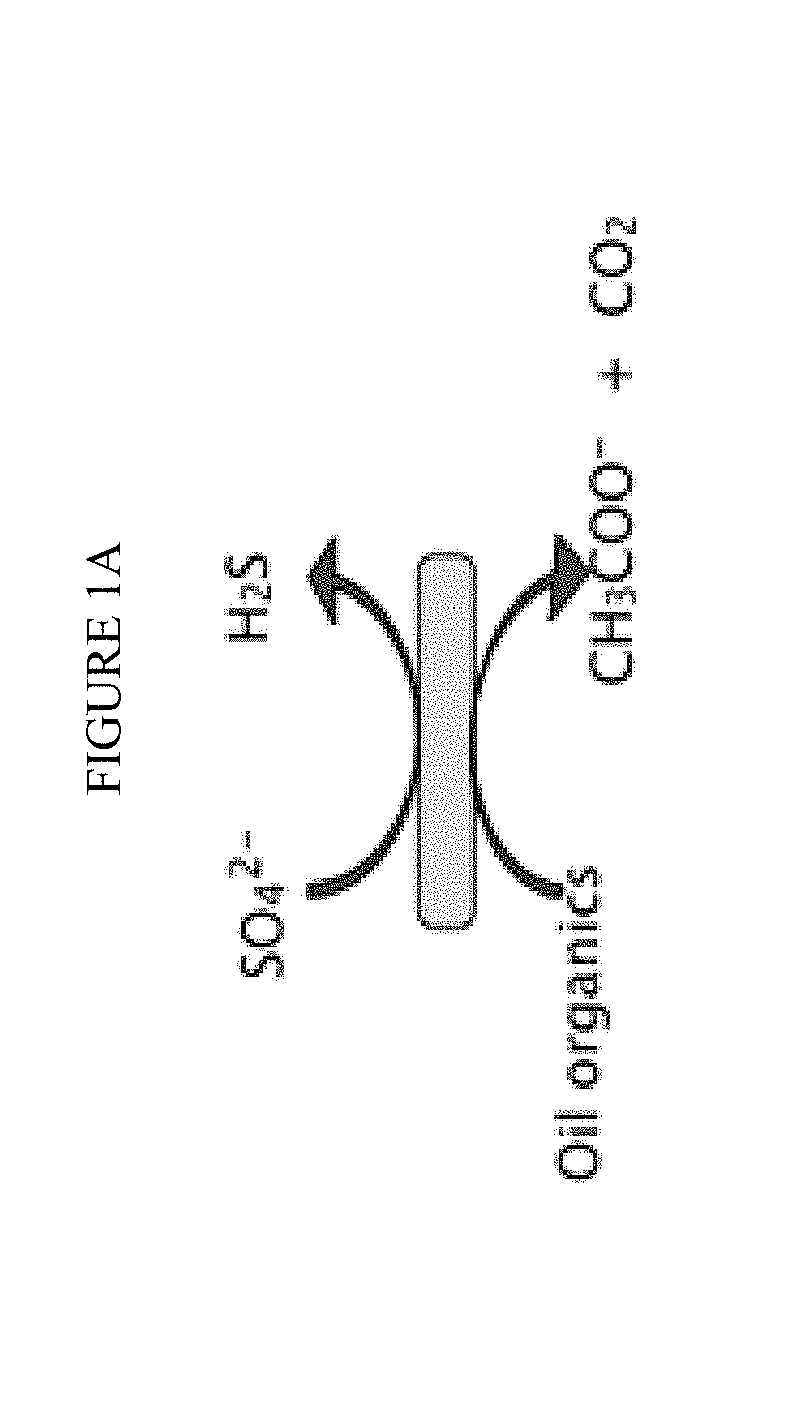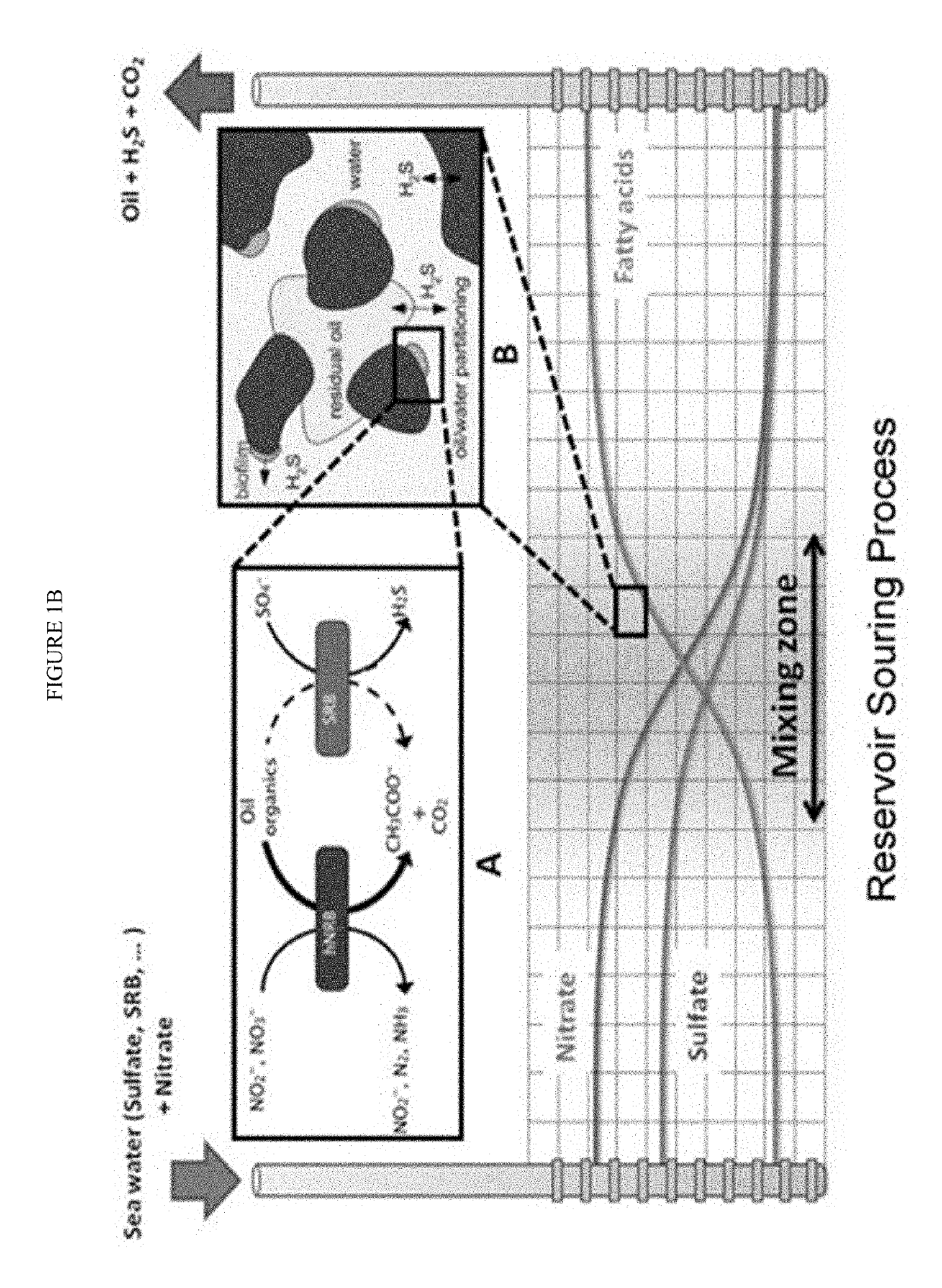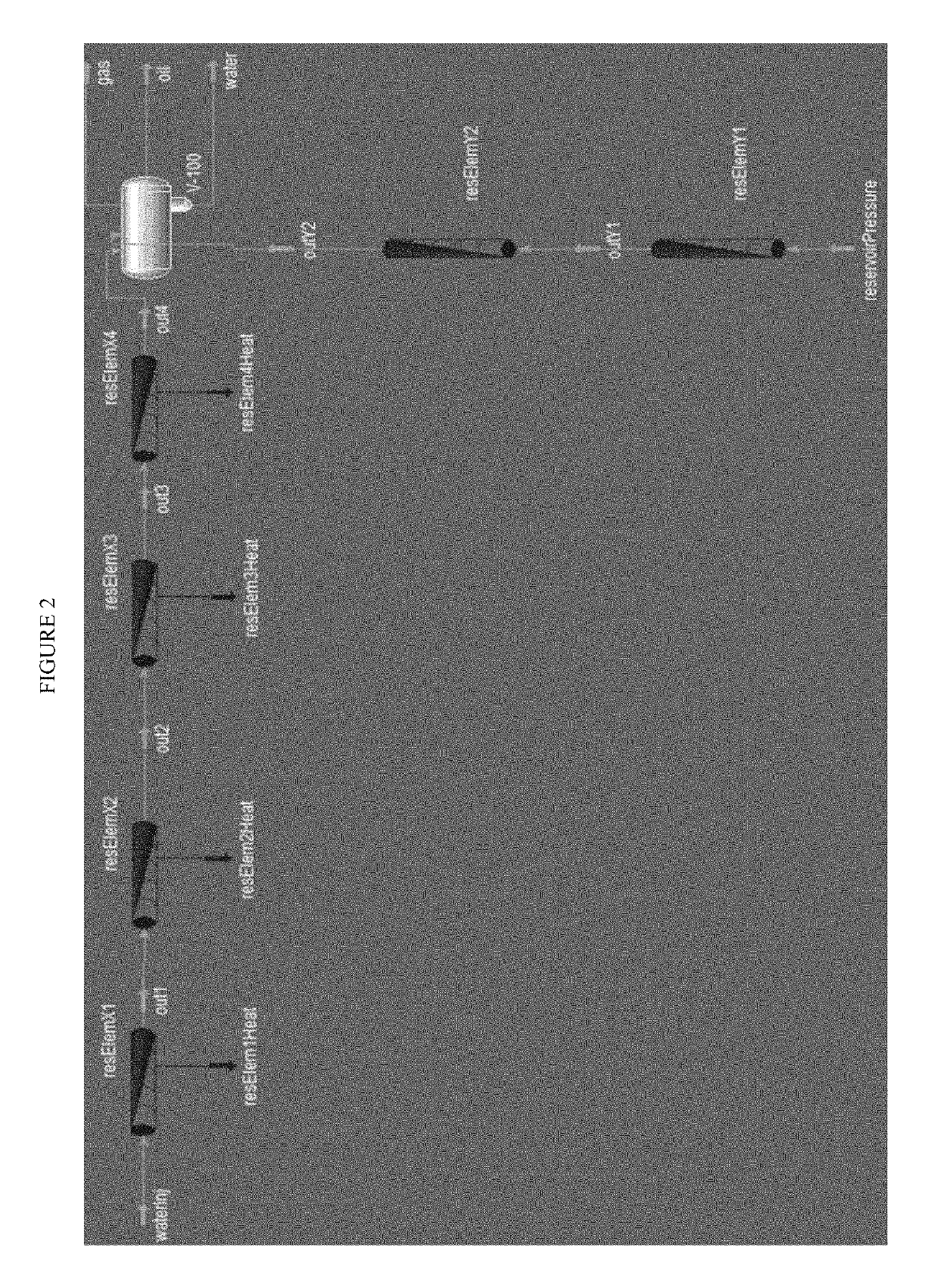Reservoir souring forecasting
a technology of reservoir souring and forecasting, applied in the field of reserve souring forecasting, can solve the problems of inherent risk of reservoir souring, high toxic and flammability, and very harmful souring of reservoirs, and achieve the effects of reducing h2s concentration, increasing h2s concentration, and reducing the partitioning
- Summary
- Abstract
- Description
- Claims
- Application Information
AI Technical Summary
Benefits of technology
Problems solved by technology
Method used
Image
Examples
Embodiment Construction
[0086]The disclosure provides a novel approach to reservoir souring forecasting using an object-oriented model. This type of model allows the user to run calculations and detailed forecasting analysis for different mechanism having differing temporal and spatial scales while preserving the model's larger scale physics and field development configuration.
[0087]The prediction and forecasting of H2S concentrations provided by the currently described systems will improve project cost, operability, safety, and commercial issues.
[0088]The present methods includes any of the following embodiments in any combination(s) of one or more thereof:
[0089]In one embodiment, a simulation of a hydrocarbon field development is provided where a computer having one or more parallel graphics processing unit (GPU); process historical data for a hydrocarbon field; by inputting, into said GPU, the network topography, field layout, fluid description, and reservoir characteristics of one or more field configu...
PUM
| Property | Measurement | Unit |
|---|---|---|
| partition coefficients | aaaaa | aaaaa |
| time | aaaaa | aaaaa |
| size | aaaaa | aaaaa |
Abstract
Description
Claims
Application Information
 Login to View More
Login to View More - R&D
- Intellectual Property
- Life Sciences
- Materials
- Tech Scout
- Unparalleled Data Quality
- Higher Quality Content
- 60% Fewer Hallucinations
Browse by: Latest US Patents, China's latest patents, Technical Efficacy Thesaurus, Application Domain, Technology Topic, Popular Technical Reports.
© 2025 PatSnap. All rights reserved.Legal|Privacy policy|Modern Slavery Act Transparency Statement|Sitemap|About US| Contact US: help@patsnap.com



